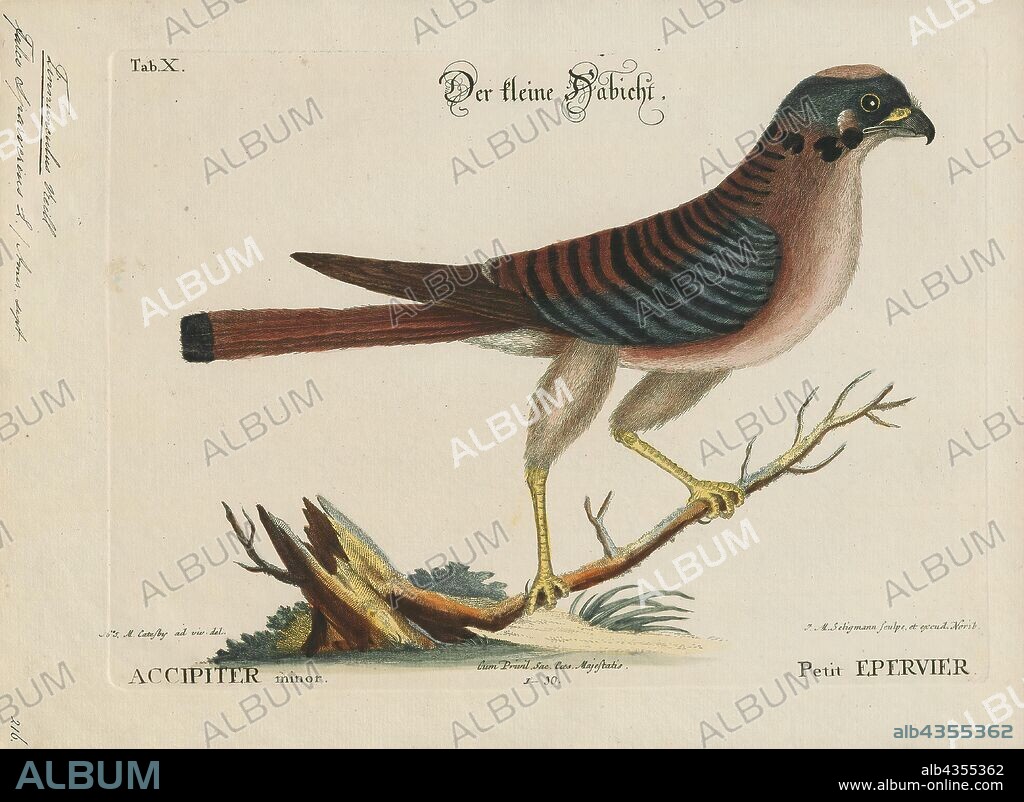alb4355362
Tinnunculus sparverius, Print, The American kestrel (Falco sparverius) is the smallest and most common falcon in North America. It has a roughly two-to-one range in size over subspecies and sex, varying in size from about the weight of a blue jay to a mourning dove. It also ranges to South America, and is a well-established species that has evolved seventeen subspecies adapted to different environments and habitats throughout the Americas. It exhibits sexual dimorphism in size (females being moderately larger) and plumage, although both sexes have a rufous back with noticeable barring. Its plumage is colorful and attractive, and juveniles are similar in plumage to adults., 1700-1880.

|
Añadir a otro lightbox |
|
Añadir a otro lightbox |



¿Ya tienes cuenta? Iniciar sesión
¿No tienes cuenta? Regístrate
Compra esta imagen
Descripción:
Ver traducción automática
Tinnunculus sparverius, Print, The American kestrel (Falco sparverius) is the smallest and most common falcon in North America. It has a roughly two-to-one range in size over subspecies and sex, varying in size from about the weight of a blue jay to a mourning dove. It also ranges to South America, and is a well-established species that has evolved seventeen subspecies adapted to different environments and habitats throughout the Americas. It exhibits sexual dimorphism in size (females being moderately larger) and plumage, although both sexes have a rufous back with noticeable barring. Its plumage is colorful and attractive, and juveniles are similar in plumage to adults., 1700-1880
Crédito:
Album / quintlox
Autorizaciones:
Modelo: No - Propiedad: No
¿Preguntas relacionadas con los derechos?
¿Preguntas relacionadas con los derechos?
Tamaño imagen:
4630 x 3385 px | 44.8 MB
Tamaño impresión:
39.2 x 28.7 cm | 15.4 x 11.3 in (300 dpi)
Palabras clave:
ADULTO • AMÉRICA DEL NORTE • AMERICA DEL SUR • AMERICA MERIDIONAL • AMERICA SUR • AMERICA • ATRACTIVO • COLORIDO • HABITATS • IMPRESION • MUJER • NORTEAMERICA • PLUMAJE • SEXO • SUBESPECIE • SUDAMERICA • SUDAMERICANA • SUR AMERICA • TAMAÑO • ZENAIDA HUILOTA
 Pinterest
Pinterest Twitter
Twitter Facebook
Facebook Copiar enlace
Copiar enlace Email
Email
